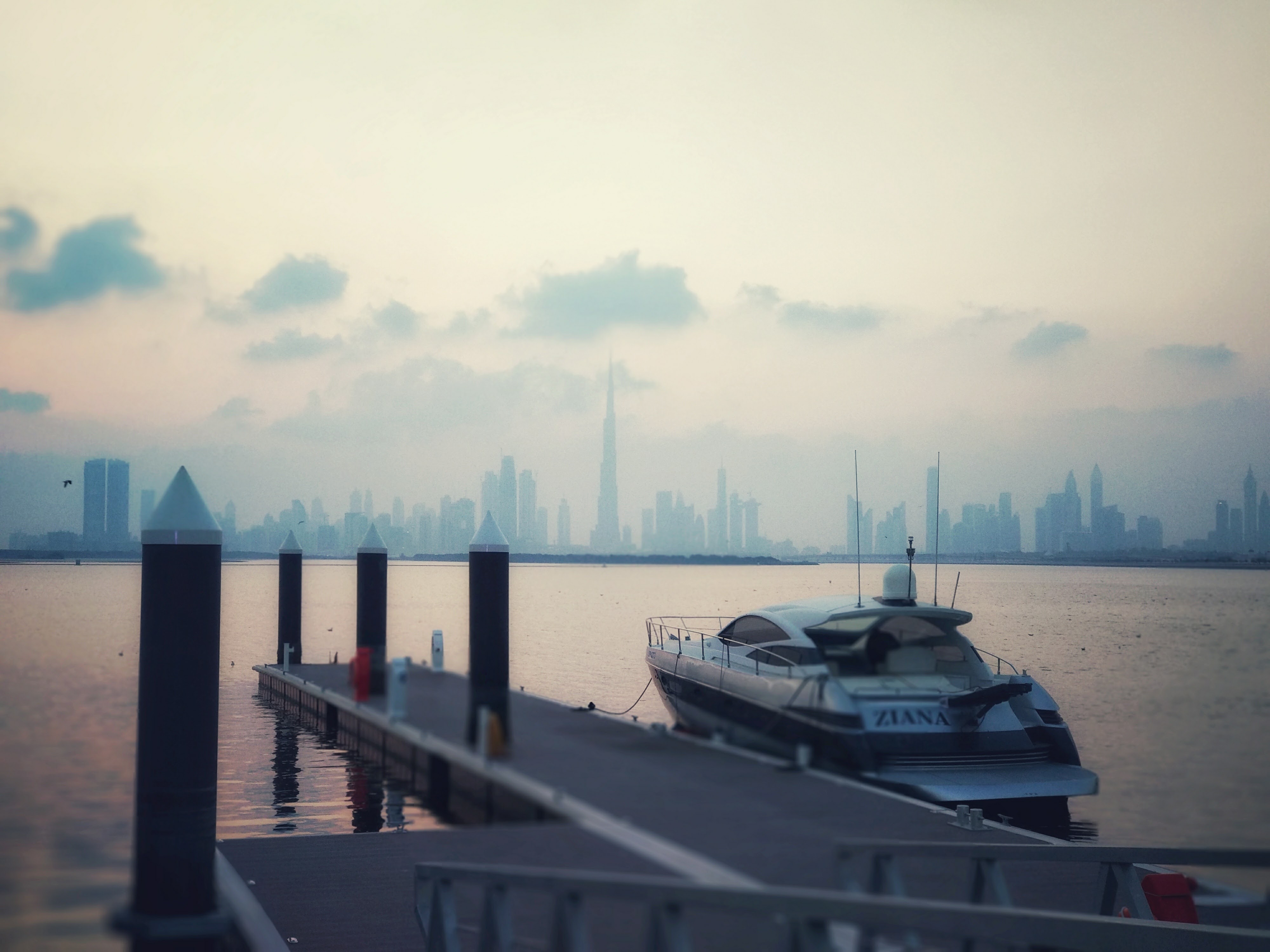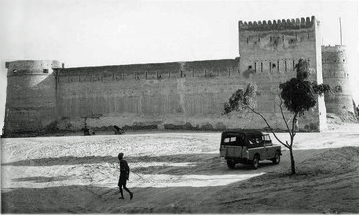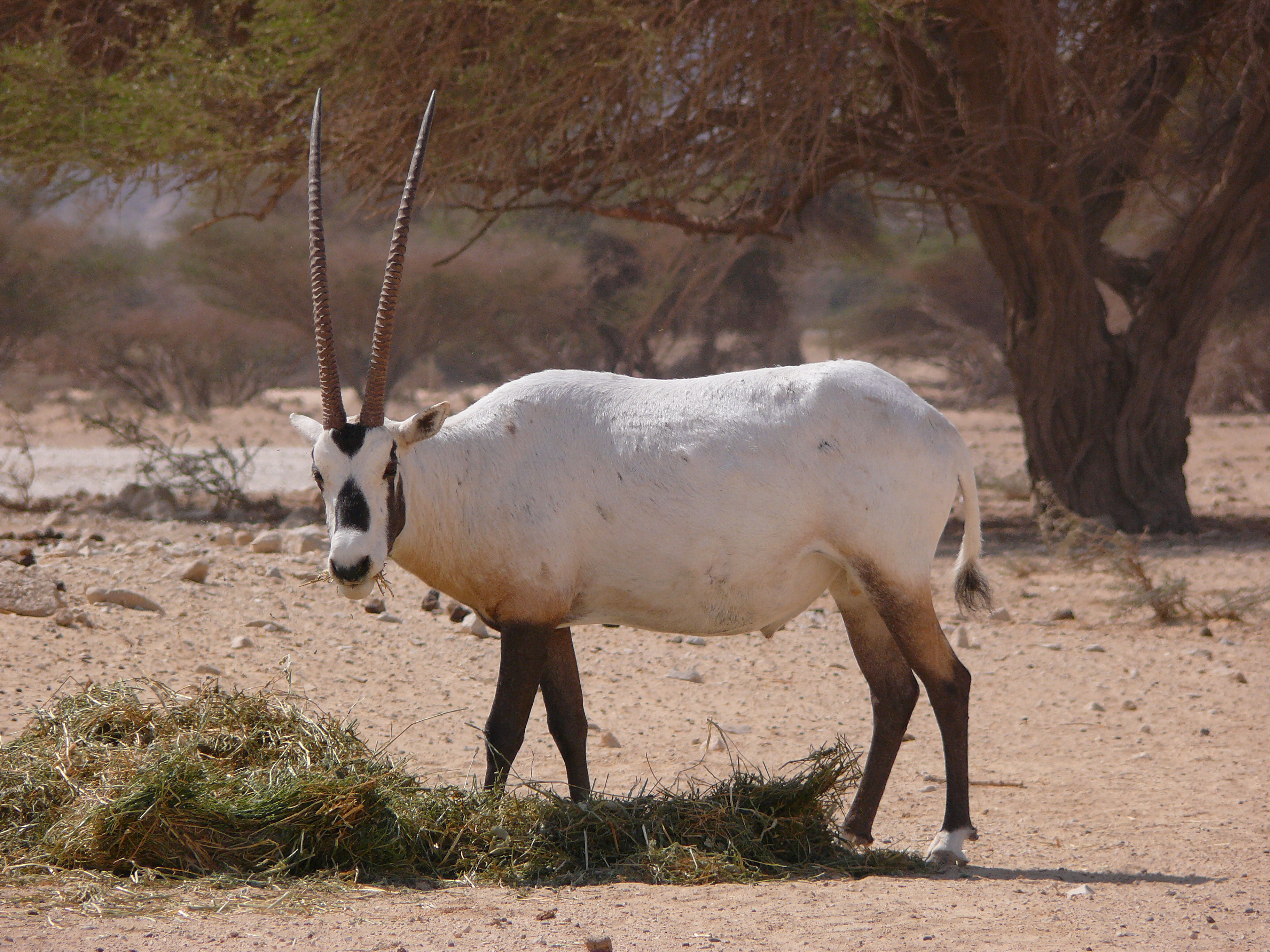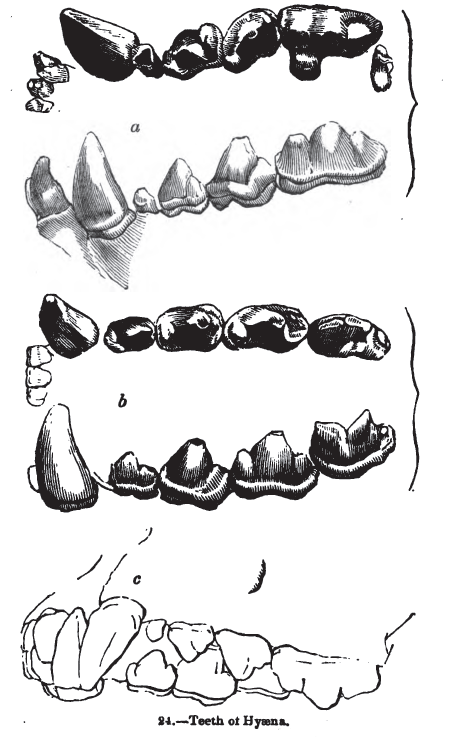|
Geography Of Dubai
Dubai is situated on the Persian Gulf coast of the United Arab Emirates and is roughly at sea level ( above). The emirate of Dubai shares borders with Abu Dhabi in the south, Sharjah in the northeast, and the Sultanate of Oman in the . Hatta, a minor exclave of the emirate, is surrounded on three sides by Oman and by the emirates of Ajman (in the west) and Ras Al Khaimah (in the north). The Persian Gulf borders the western coast of the emirate. Dubai is positioned at and covers an area of , which represents a significant expansion beyond its initial designation due to land reclamation from the sea. Dubai lies directly within the Arabian Desert. However, the topography of Dubai is significantly different from that of the southern portion of the UAE in that much of Dubai's landscape is highlighted by sandy desert patterns, while gravel deserts dominate much of the southern region of the country. [...More Info...] [...Related Items...] OR: [Wikipedia] [Google] [Baidu] |
Dubai Creek Harbour 1
Dubai (Help:IPA/English, /duːˈbaɪ/ Help:Pronunciation respelling key, ''doo-BYE''; Modern Standard Arabic, Modern Standard Arabic: ; Emirati Arabic, Emirati Arabic: , Romanization of Arabic, romanized: Help:IPA/English, /diˈbej/) is the List of cities in the United Arab Emirates#Major cities, most populous city in the United Arab Emirates and the capital of the Emirate of Dubai. It is located on a Dubai Creek, creek on the south-eastern coast of the Persian Gulf, Persian Gulf. As of 2025, the city population stands at 4 million, 92% of whom are Expatriates in the United Arab Emirates, expatriates. The wider urban area includes Sharjah and has a population of 5 million people as of 2023,https://www.demographia.com/db-worldua.pdf while the Dubai–Sharjah–Ajman metropolitan area counts 6 million inhabitants. Founded in the early 18th century as a Cultured pearl, pearling and fishing settlement, Dubai became a regional trade hub in the 20th century after declaring itself a f ... [...More Info...] [...Related Items...] OR: [Wikipedia] [Google] [Baidu] |
Deira, Dubai
Deira () is a historically significant district within the U.A.E. city of Dubai. It is located at the northern end of Dubai Creek. History Deira is one of the oldest and most established areas of Dubai. Its origin dates back to the mid-1700s, it developed along the canal called Dubai Creek, this salt-water canal separates Deira from Bur Dubai. The canal enabled the area to develop its importance. It facilitated the sea trade, which is still operational today. With the help of these traditional dhow boats, hundreds of tons of goods are still loaded and unloaded on the canal docks every day. In 1841, a smallpox epidemic broke out in the district of Bur Dubai, forcing residents to relocate east to Deira. In 1896, a fire broke out alongside Dubai Creek, a disastrous occurrence in a town where many family homes were still constructed from ''barasti'' – palm fronds. The conflagration consumed half the houses of Bur Dubai, while the district of Deira was said to have been total ... [...More Info...] [...Related Items...] OR: [Wikipedia] [Google] [Baidu] |
Green Turtle
The green sea turtle (''Chelonia mydas''), also known as the green turtle, black (sea) turtle or Pacific green turtle, is a species of large sea turtle of the family Cheloniidae. It is the only species in the genus ''Chelonia''. Its range extends throughout tropical and subtropical seas around the world, with two distinct populations in the Atlantic and Pacific Oceans, but it is also found in the Indian Ocean. The common name refers to the usually green fat found beneath its carapace, due to its diet strictly being seagrass, not to the color of its carapace, which is olive to black. The dorsoventrally flattened body of ''C. mydas'' is covered by a large, teardrop-shaped carapace; it has a pair of large, paddle-like flippers. It is usually lightly colored, although in the eastern Pacific populations, parts of the carapace can be almost black. Unlike other members of its family, such as the hawksbill sea turtle, ''C. mydas'' is mostly herbivorous. The adults usually inhabit ... [...More Info...] [...Related Items...] OR: [Wikipedia] [Google] [Baidu] |
Hawksbill
The hawksbill sea turtle (''Eretmochelys imbricata'') is a critically endangered sea turtle belonging to the family Cheloniidae. It is the only extant species in the genus ''Eretmochelys''. The species has a global distribution that is largely limited to tropical and subtropical marine and estuary ecosystems. The appearance of the hawksbill is similar to that of other marine turtles. In general, it has a flattened body shape, a protective carapace, and flipper-like limbs, adapted for swimming in the open ocean. ''E. imbricata'' is easily distinguished from other sea turtles by its sharp, curving beak with prominent tomium, and the saw-like appearance of its shell margins. Hawksbill shells slightly change colors, depending on water temperature. While this turtle lives part of its life in the open ocean, it spends more time in shallow lagoons and coral reefs. The World Conservation Union, primarily as a result of human fishing practices, classifies ''E. imbricata'' as critica ... [...More Info...] [...Related Items...] OR: [Wikipedia] [Google] [Baidu] |
Dugong
The dugong (; ''Dugong dugon'') is a marine mammal. It is one of four living species of the order Sirenia, which also includes three species of manatees. It is the only living representative of the once-diverse family Dugongidae; its closest modern relative, Steller's sea cow (''Hydrodamalis gigas''), was hunted to extinction in the 18th century. The dugong is the only sirenian in its range, which spans the waters of some 40 countries and territories throughout the Indo-West Pacific. The dugong is largely dependent on seagrass communities for subsistence and is thus restricted to the coastal habitats that support seagrass meadows, with the largest dugong concentrations typically occurring in wide, shallow, protected areas such as bays, mangrove channels, the waters of large inshore islands, and inter-reefal waters. The northern waters of Australia between Shark Bay and Moreton Bay are believed to be the dugong's contemporary stronghold. Like all modern sirenians, the d ... [...More Info...] [...Related Items...] OR: [Wikipedia] [Google] [Baidu] |
Hammour
Groupers are a diverse group of marine ray-finned fish in the family Epinephelidae, in the order Perciformes. Groupers were long considered a subfamily of the seabasses in Serranidae, but are now treated as distinct. Not all members of this family are called "groupers". The common name "grouper" is usually given to fish in one of two large genera: ''Epinephelus'' and '' Mycteroperca''. In addition, the species classified in the small genera ''Anyperidon'', ''Cromileptes'', ''Dermatolepis'', ''Graciela'', ''Saloptia'', and ''Triso'' are also called "groupers". Fish in the genus '' Plectropomus'' are referred to as "coral groupers". These genera are all classified in the subfamily Epiphelinae. However, some of the hamlets (genus ''Alphestes''), the hinds (genus ''Cephalopholis''), the lyretails (genus ''Variola''), and some other small genera (''Gonioplectrus'', ''Niphon'', ''Paranthias'') are also in this subfamily, and occasional species in other serranid genera have common na ... [...More Info...] [...Related Items...] OR: [Wikipedia] [Google] [Baidu] |
Arabian Oryx
The Arabian oryx or white oryx (''Oryx leucoryx'') is a medium-sized antelope with a distinct shoulder bump, long, straight horns, and a tufted tail. It is a bovid, and the smallest member of the genus '' Oryx'', native to desert and steppe areas of the Arabian Peninsula. The Arabian oryx was extinct in the wild by the early 1970s, but was saved in zoos and private reserves, and was reintroduced into the wild starting in 1980. In 1986, the Arabian oryx was classified as endangered on the IUCN Red List, and in 2011, it was the first animal to revert to vulnerable status after previously being listed as extinct in the wild. It is listed in CITES Appendix I. In 2016, populations were estimated at 1,220 individuals in the wild, including 850 mature individuals, and 6,000–7,000 in captivity worldwide. Etymology The taxonomic name ''Oryx leucoryx'' is from the Greek ' (gazelle or antelope) and ' (white). The Arabian oryx is also called the white oryx in English, ' in Hebrew, ... [...More Info...] [...Related Items...] OR: [Wikipedia] [Google] [Baidu] |
Fennec Fox
The fennec fox (''Vulpes zerda'') is a small fox native to the deserts of North Africa, ranging from Western Sahara and Mauritania to the Sinai Peninsula. Its most distinctive feature is its unusually large ears, which serve to dissipate heat and listen for underground prey. The fennec is the smallest fox species. Its coat, ears, and kidney functions have Xerocole, adapted to the desert environment with high temperatures and little water. The fennec fox mainly eats insects, small mammals and birds. It has a life span of up to 14 years in captivity and about 10 years in the wild. Pups are preyed upon by the Pharaoh eagle-owl; both adults and pups may possibly fall prey to jackals and striped hyenas. Fennec families dig out burrows in the sand for habitation and protection, which can be as large as and adjoin the burrows of other families. Precise population figures are not known but are estimated from the frequency of sightings; these indicate that the fennec fox is currently ... [...More Info...] [...Related Items...] OR: [Wikipedia] [Google] [Baidu] |
Caracal
The caracal (''Caracal caracal'') () is a medium-sized Felidae, wild cat native to Africa, the Middle East, Central Asia, and arid areas of Pakistan and northwestern India. It is characterised by a robust build, long legs, a short face, long tufted ears, relatively short tail, and long canine teeth. Its coat is uniformly reddish tan or sandy, while the ventral parts are lighter with small reddish markings. It reaches at the shoulder and weighs . It was first scientific description, scientifically described by German naturalist Johann Christian Daniel von Schreber in 1776. Three subspecies are recognised. Typically nocturnality, nocturnal, the caracal is highly secretive and difficult to observe. It is territory (animal), territorial, and lives mainly alone or in pairs. The caracal is a carnivore that typically preys upon birds, rodents, and other small mammals. It can leap higher than and catch birds in midair. It stalks its prey until it is within of it, after which it ru ... [...More Info...] [...Related Items...] OR: [Wikipedia] [Google] [Baidu] |
Striped Hyena
The striped hyena (''Hyaena hyaena'') is a species of hyena native to North and East Africa, the Middle East, the Caucasus, Central Asia, and the Indian subcontinent. It is the only extant species in the genus ''Hyaena''. It is listed by the IUCN as near-threatened, as the global population is estimated to be under 10,000 mature individuals which continues to experience deliberate and incidental persecution along with a decrease in its prey base such that it may come close to meeting a continuing decline of 10% over the next three generations. It is the smallest of the bone-cracking hyenas and retains many primitive viverrid-like characteristics lost in larger species, having a smaller and less specialised skull. Though primarily a scavenger, large specimens have been known to kill their own prey, and attacks on humans have occurred in rare instances. The striped hyena is a monogamous animal, with both males and females assisting one another in raising their cubs. A nocturnal ... [...More Info...] [...Related Items...] OR: [Wikipedia] [Google] [Baidu] |
MacQueen's Bustard
The Asian houbara (''Chlamydotis macqueenii''), also known as MacQueen's bustard, is a large bird in the bustard family. It is native to the desert and steppe regions of Asia, west from the Sinai Peninsula extending across Iran and further north toward Kazakhstan and Mongolia. In the 19th century, Vagrancy (biology), vagrants were found as far west of their range as Great Britain. Populations have decreased by 20 to 50% between 1984 and 2004 mainly due to hunting and changes in land-use. The Asian houbara is a partial latitudinal Animal migration, migrant while the African houbara (''C. undulata'') is more sedentary. Both species are the only members of the genus ''Chlamydotis''. The Asian houbara used to be regarded as a subspecies of the African houbara. Taxonomy ''Otis macqueenii'' was proposed by John Edward Gray in 1834 for a bustard from India drawn by Thomas Hardwicke. It was long regarded a subspecies of the African houbara ''Chlamydotis undulata''. It was classified as a ... [...More Info...] [...Related Items...] OR: [Wikipedia] [Google] [Baidu] |








